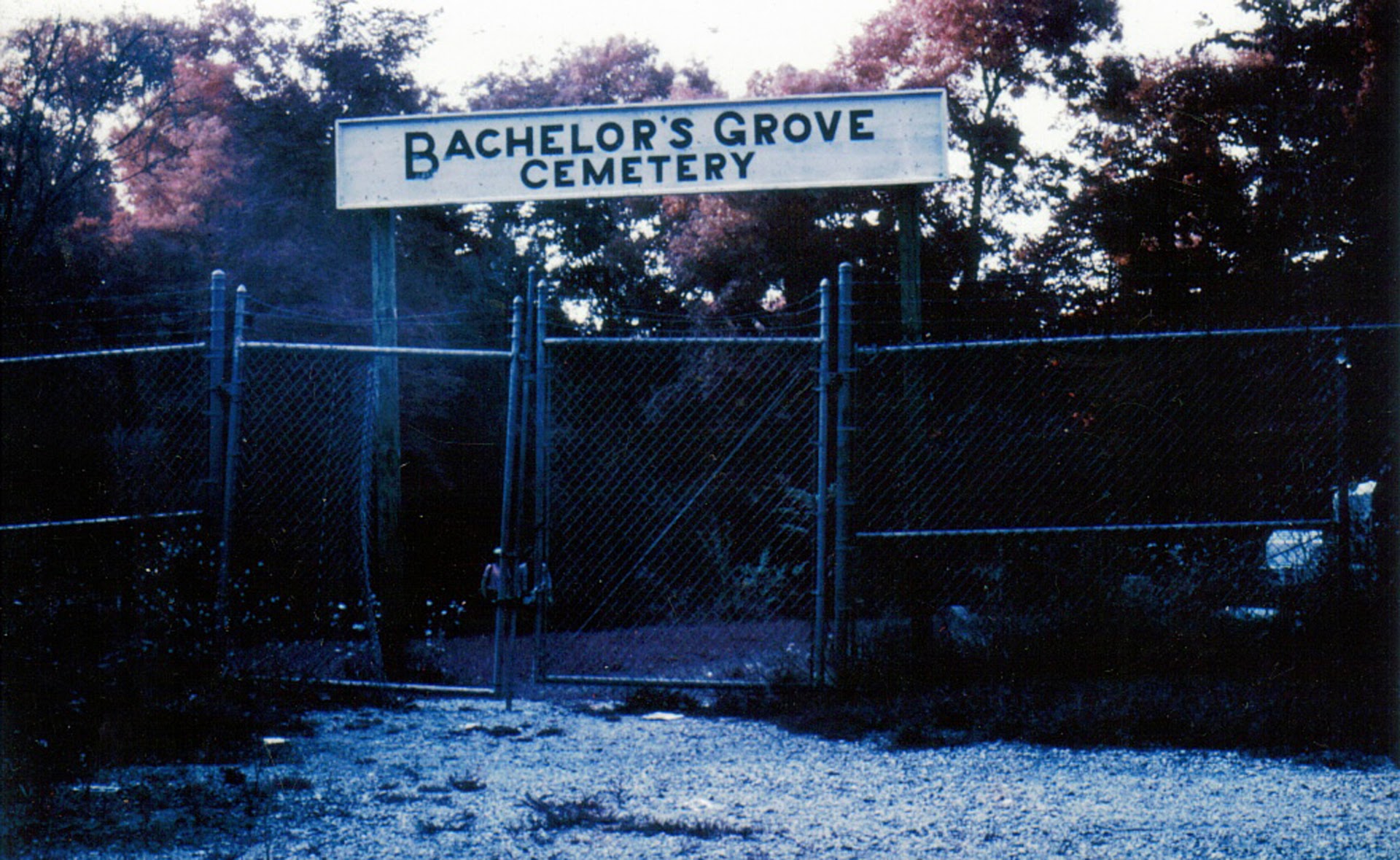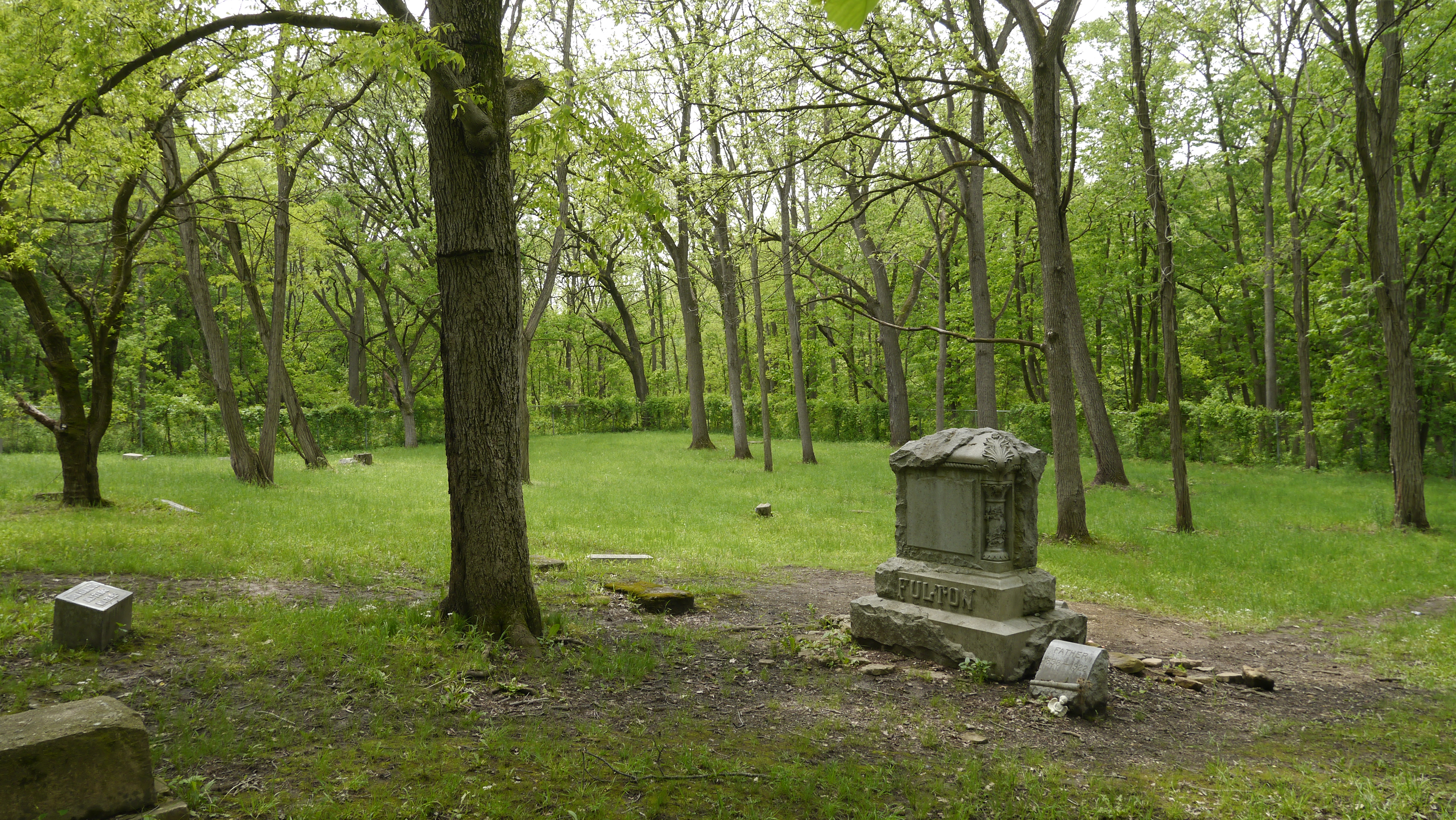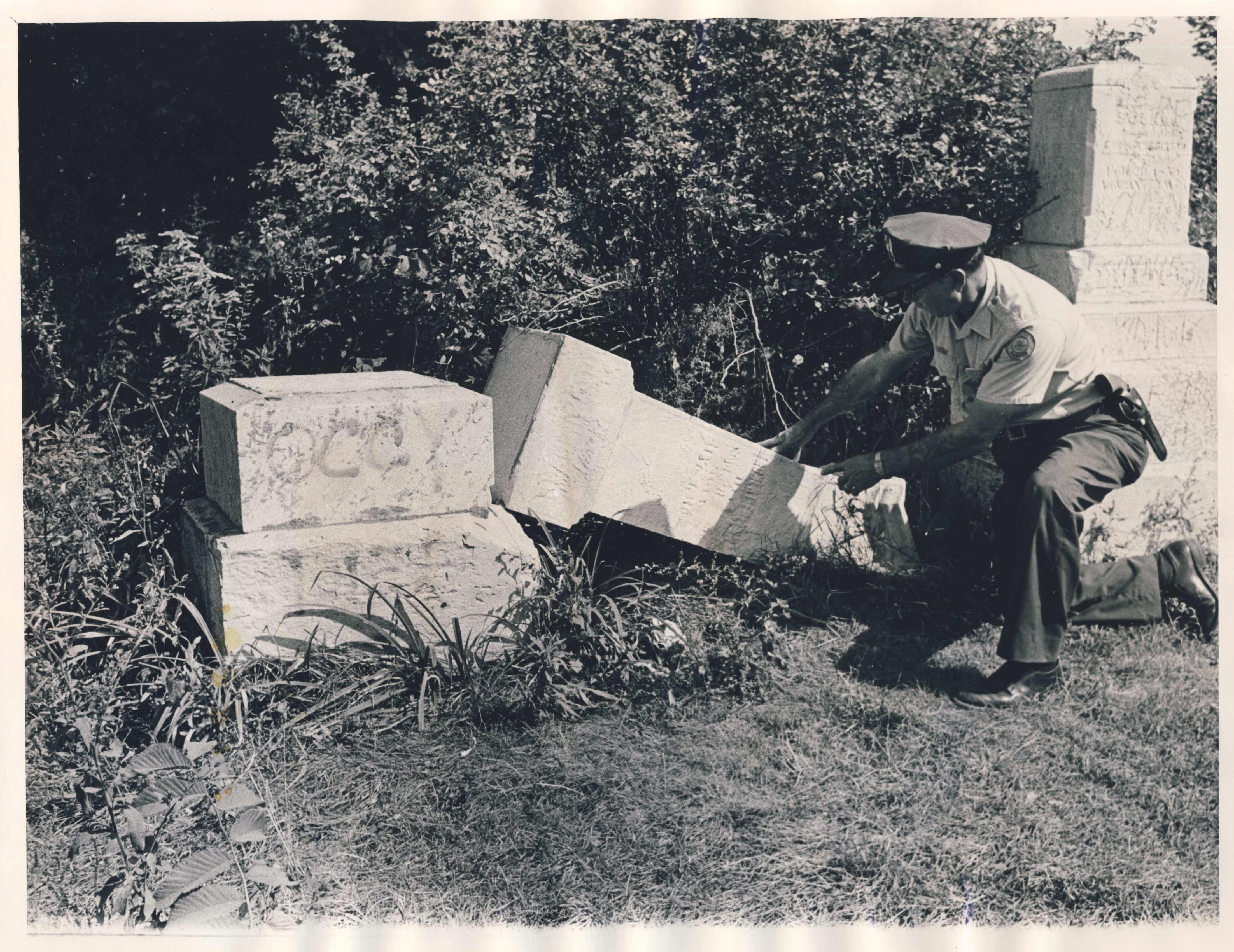Tucked away in Rubio Woods in the south suburb of Midlothian, Bachelor’s Grove is an isolated clearing in the woods. The graveyard is overgrown and hasn’t had a burial since the 1980s. Young people have been known to make it a hangout spot away from the watchful eye of parents and authorities.
But more than anything, the little cemetery has gained a reputation for being haunted. Some residents say they’ve seen sightings of a woman in white or an apparition of a house. There’s a rumor that Al Capone once dumped bodies in a pond next to the cemetery. Some residents say the ghost stories have been an invitation for vandals to damage historic headstones.
When Curious City got a question about Bachelor’s Grove, we looked into the history of the cemetery, which tells a story about early settlers in the area. We also spoke with a local advocate who wants to preserve those remnants of the region’s history, but argues the ghost stories have made it difficult.

A cemetery for early settlers
Bachelor’s Grove was one of the earliest settlements in the south suburbs. After the Black Hawk War in 1832, early settlers used wood from forested areas to build homes and make fires.
There are several theories as to how the area was named, according to Brad Bettenhausen, president of the Tinley Park Historical Society.
“The popular story that has been told for decades is … a group of unmarried gentlemen had settled there and kept a bachelor hall or a gathering place, and thus, Bachelor’s Grove,” he said.
However, Bettenhausen thinks the cemetery is most likely named after the Batchelder family, one of the early settlers. Originally, the area surrounding the cemetery was known as Batchelder’s Grove.
The first burial on record at Bachelor’s Grove Cemetery was in 1838. Prominent families of the settlement, including the Fultons, were buried there.

When the railroad was built in the early 1850s, it passed through Blue Island and Tinley Park, but not Bachelor’s Grove. People and businesses started to move away to be closer to the train. Some even took the deceased with them to bury in closer and more prestigious cemeteries.
“When the railroad came through the area … [it was] kind of the beginning of the end of the Bachelor’s Grove settlement,” Bettenhausen said.
In 1975, Cook County took over maintaining the cemetery, which it continues to do today. The last burial at Bachelor’s Grove took place in the 1980s.
Today, the cemetery is nestled in Rubio Woods, part of the Cook County Forest Preserves, which covers a lot of area in this part of the south suburbs.
Viral ghost stories
During the 1960s, rumors of hauntings and paranormal activity in Bachelor’s Grove ran wild.

He started a group called the Ghost Research Society in 1977, in which he’d investigate alleged paranormal activity in the area, including at Bachelor’s Grove.
But the results of one of Kaczmarek’s ghost investigations at Bachelor’s Grove put the cemetery on the map, nationally.
Kaczmarek said his group takes photos using an infrared camera. Some of the images taken at Bachelor’s Grove appeared to have floating orbs or white smoke. But in 1991, Kaczmarek said one of the society’s members took perhaps the most famous photo at the cemetery.
“It was a woman in a long kind of Victorian gown, long brown hair, kind of staring away in profile,” he said. “And a stone that has no name on it, just a checkerboard pattern on the bottom.”
The figure is known as the “Madonna of Bachelor’s Grove,” or “the woman in white.” Parts of the woman’s body in the photo appear translucent.
The image ran in newspapers including the Chicago Sun-Times and Chicago Tribune. It was featured on television programs on the Discovery Channel. After the image was published, Bachelor’s Grove became popular with ghost-hunting enthusiasts across the country.
Kaczmarek said his group has captured other images since — like a figure that appears to be holding a baby. Some connect the woman in white and the baby to a tombstone in the cemetery that simply reads “Infant Daughter.”
A vandalism problem and the future of the cemetery
Historian Brad Bettenhausen thinks the ghost stories have become an invitation for people to come in and vandalize Bachelor’s Grove Cemetery.
Before he turned the cemetery over to Cook County, the remaining independent trustee, Clarence Fulton — whose family were among the first buried at the gravesite — took it upon himself to protect the graveyard from vandals.
“There are stories of him coming out here … waiting for somebody to come and then shooting off a shotgun to just scare the crap out of them,” Bettenhausen said.
Bettenhausen said vandalism continues to be a serious issue. Rowdy visitors have been known to steal headstones and throw them into the lagoon.
He said it’s hard to keep a good record of who is buried where when people keep moving markers and headstones around.
Kaczmarek, however, thinks the ghost stories have actually helped the cemetery. Some ghost hunters have become volunteers.
“[Volunteers] rake, they get rid of tree limbs and so forth. There's even a video of people pulling out a large stone out of the lagoon,” Kaczmarek said.
![An August, 1966 article in the Chicago Sun-Times describes the vandalism at Bachelor’s Grove Cemetery. 'Steal a tombstone, the story goes, and [the ghost will] hunt you down,' writes the author. 'But ... a broken-down wire fence, defaced and toppled gravestones … are evidence that the ghost is derelict in his duties.'](https://cdn.wbez.org/image/004dcac9dfbf28a88285540df5285eda)
Bettenhausen has a problem with that. He said the area has a lot of history, and the cemetery should be preserved. He’d like to see a commemorative sign at Bachelor’s Grove highlighting its history, and better upkeep of the grounds.
“It's a final resting place of a number of individuals. As a sacred place of burial, it deserves some respect,” Bettenhausen said. “Unfortunately, I don't see it getting the level of respect that it needs.”
Cook County said maintenance workers mow the grass and empty trash cans regularly at the cemetery, but there are no formal plans for restoration.
Cameron Costanzo is a writer and producer in Chicago.



